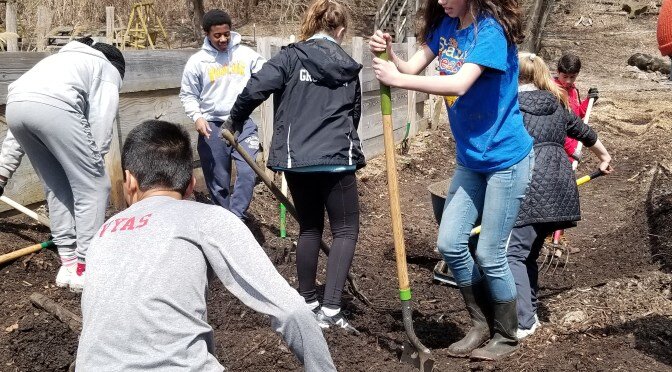“Teaching Cleveland is a wonderful learning experience for teachers and students in the Greater Cleveland region. I appreciate the fact that initiatives such as the Rid-All Green Partnership are included in the curriculum because urban regeneration tells a perfect story of Cleveland’s past and Cleveland’s future, simultaneously. We are quite proud of our affiliation with this important program and organization” said Randell McShepard, co-Founder of Rid-All Green Partnership.
The Rid-All Green Partnership’s Urban Farm and Youth Education facility seeks to transform communities through connections with their local environment and understanding of urban agriculture as community development, economic development, and environmental rehabilitation.
The Rid-All Kinsman Farm site currently houses 7 greenhouses, a permaculture-based landscape demonstration, a planned city-funded bioretention area to filter toxins from our watershed, season extending greenhouses, indoor and outdoor aquaponics facilities for the production of sustainable fish, low-yield green-waste composting operations for soil remediation, and an environmental education center.
Urban agriculture contributes to the reduction of impermeable ground, improving storm water drainage, and decreasing the “heat island” effect. Over time, urban gardens and farms can reclaim damaged soil, rehabilitating parcels of land that have been polluted and damaged by years of industrial and manufacturing use. Urban agriculture, vermiculture, aquaponics, and green industries also provide means of recycling organic waste by using food and paper waste, and compost as soil restoring fertilizer.
By encouraging residents to eat local foods, the carbon footprint of the food consumed in Cleveland decreases, due to significantly reduced transportation miles and associated emissions. Finally urban gardens, small farms, and compositing creates sustainability and security for our environment, restoring and maintaining greenspace and healthy natural spaces for our future and our children.
Our educational curriculum is divided into three units. Each unit is comprised of 10-15 authentic lessons that incorporate scientific inquiry and knowledge. All units can be adapted to suit and fulfill curriculum content standards at any grade level with grade specific vocabulary and concept guides. Learn more here!
In addition to the science standards, our curriculum model is also in alignment to Ohio’s Learning Standards for Social Studies, Health Education, Financial Literacy, Physical Education, and Social-Emotional Learning.
